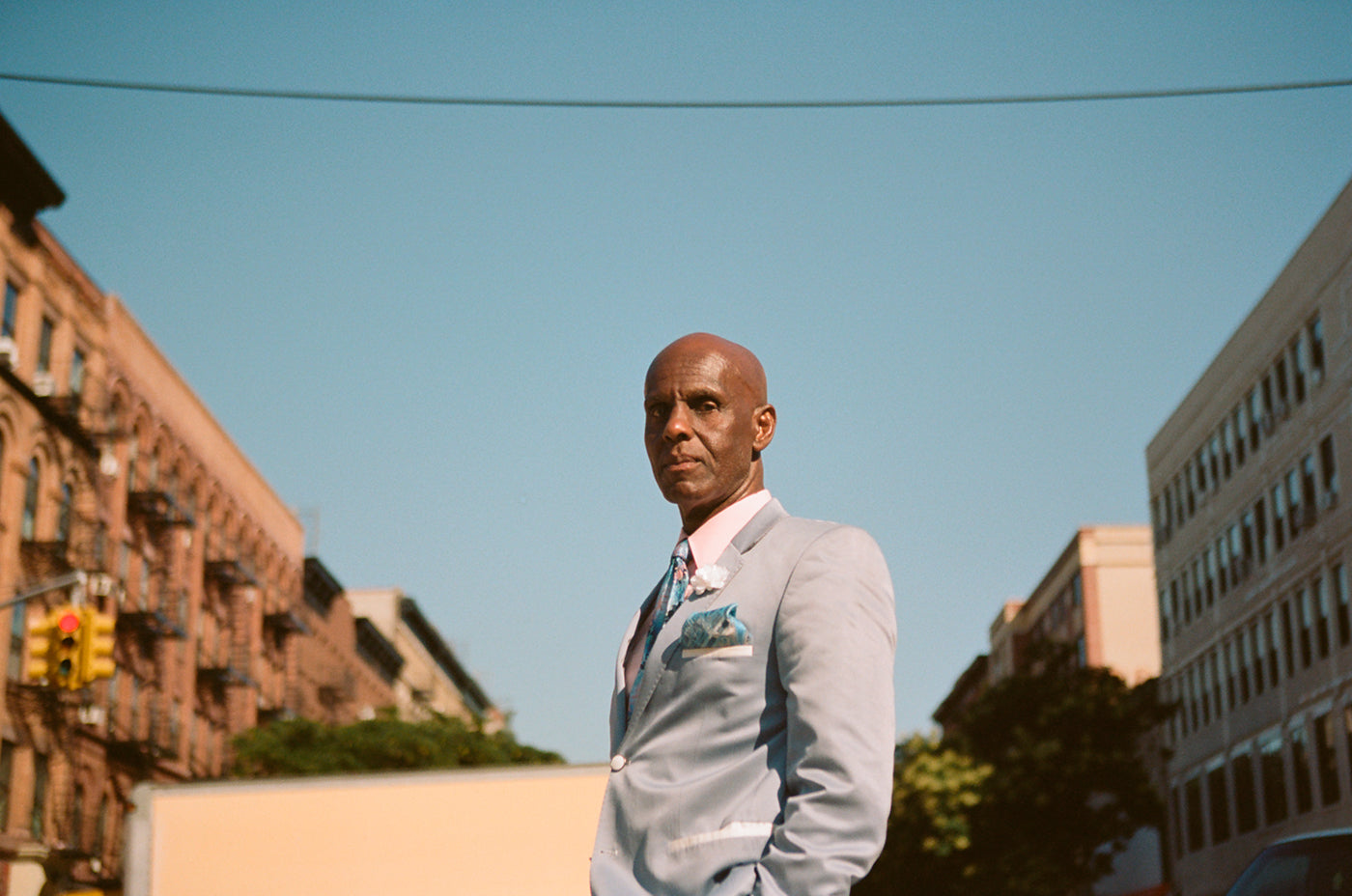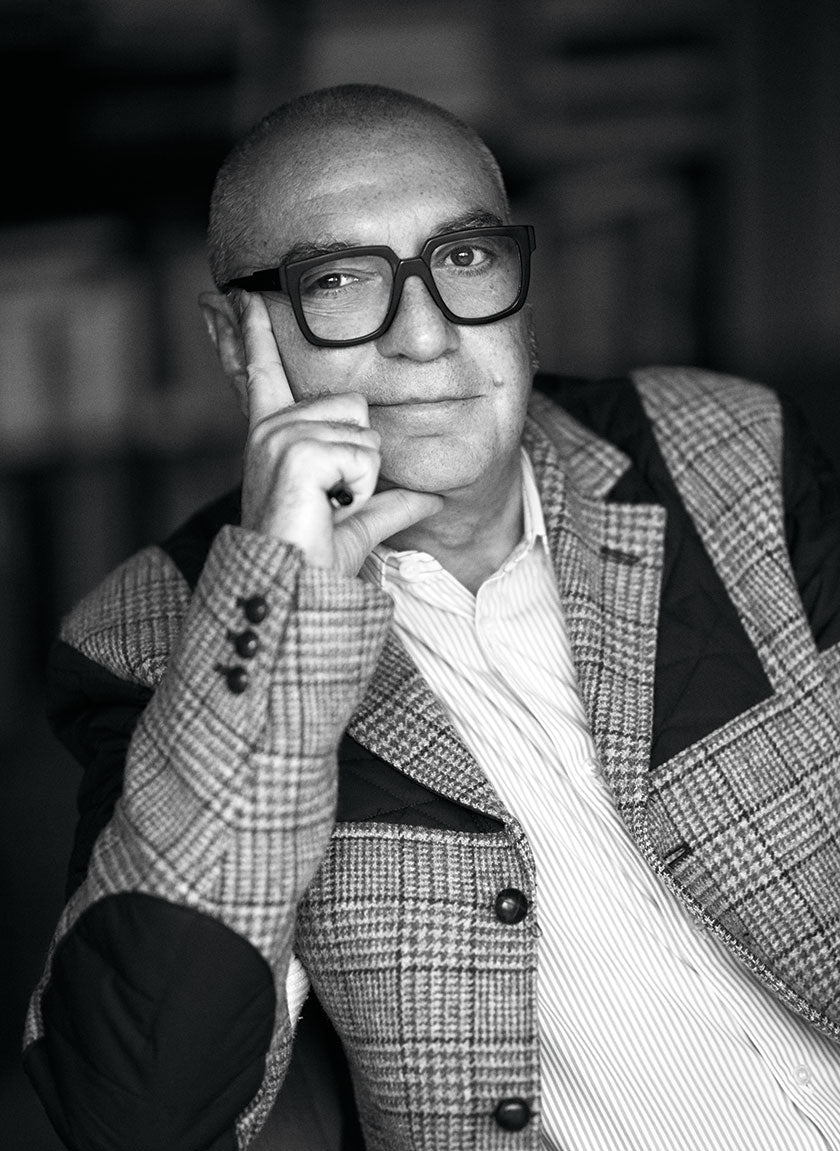
Dapper Dan is the Comeback King of High Fashion with Street Sensibility
His Story Embodies Both Brighter and Bleaker Facets of the Relationship Between High-End Fashion and Subculture
Look behind the right red-velvet curtained door in Harlem, and you'll find the Gucci-backed atelier of Dapper Dan. If you're lucky enough to be permitted entry into the appointment-only boutique, you can peruse Dapper Dan's bespoke collection of pieces made exclusively from Gucci fabrics hand-selected by the man himself. Yet two decades ago, the same Dapper Dan–born Daniel Day–was forced to close his legendary boutique on 43 East 125th Street due to lawsuits from the high-end houses, whose logos Dan used with abandon and without permission in his designs. Including Gucci itself.
As improbable as the rise, fall, and re-emergence of Dapper Dan is, it also stands as a metaphor for the turbulent and complex relationship between high fashion and underground culture. It's a relationship of inspiration and appropriation, with high-end designers taking their cues from global subcultures, and street culture giving a second life to cult-status designer pieces and logos (and often being issued with lawsuits for their troubles). Where Dapper Dan's story diverges is the present moment, where the rise of streetwear in mainstream culture means the relationship between the sidewalk and catwalk is evolving.

What forced Dapper Dan in 1992 to close his boutique in Harlem, is recently practiced in official liaisons: The unprecedented Supreme x Louis Vuitton collaboration of Fall/ Winter 2017 flipped many of Supreme's apparel staples into luxury goods. Supreme's penchant for workwear attire was elevated with an all-over print chore coat that featured the collaborative monogram. (Photo: Thomas Welch)
It's this moment that's explored in The Incomplete Highsnobiety Guide to Street Fashion and Culture–and you could hardly write such a guide without peering into the mythic history of Dapper Dan. In 1982, he opened his Harlem boutique, sourcing his first clients through his reputation as an impeccable dresser during his days as a professional gambler. His atelier was frequented by everyone from sports stars to drug kingpins, but his style was cemented by the hip-hop scene. His clientele included Salt 'n' Pepa, Big Daddy Kane, The Fat Boys, and Eric B. & Rakim (who wore Dapper Dan's designs on the album covers for "Paid in Full" and "Follow the Leader").
In short, he made luxury products for the rappers, athletes, and nascent celebrities who had found success, but hadn't found someone who made clothes for them, which drew from their experiences.
Dapper Dan's silhouettes are synonymous with early hip-hop style. He took the fabrics and logos from brands like Gucci, Louis Vuitton, and MCM, and remixed them into street-ready styles: tracksuits, bomber jackets, hand-painted leather jackets, extravagant furs–at a time, when the respective brands still mainly focused on designing luxury bags.
Dapper Dan's pieces weren't knockoffs, they were unique pieces in their own right leading to the coining of the term "knockups" to describe the quality and originality of his designs. Their influence was also drawn from far beyond hip-hop and logo-mania. They were infused with knowledge of gangster life (with hidden second pockets for smuggling), the "hustler style" of the Harlem Renaissance and inspiration from Dapper Dan's African travels (he regularly spoke of his aim to "Africanize" high-end European fashion). In short, he made luxury products for the rappers, athletes, and nascent celebrities who had found success, but hadn't found someone who made clothes for them, which drew from their experiences.
Notoriously, the lawsuit bombardment began after a fight broke out between Mike Tyson and Mitch "Blood" Green in front of his store.
His market appeal to the stars who weren't being served by the high-end fashion houses was Dapper Dan's success, and also his downfall. Notoriously, the lawsuit bombardment began after a fight broke out between Mike Tyson and Mitch "Blood" Green in front of his store. Fashion houses were alerted to Dapper Dan's existence through newspaper photographs taken of the brawl. What followed was lawsuits from Gucci, MCM, and just about everyone else whose logos Dapper Dan used in his work. Fendi struck the financial death blow, and in 1992, Dapper Dan's Harlem atelier was no more.
The story picks back up in 2016, when Gucci director Alessandro Michele sent an "homage" to Dapper Dan down the runway …
Yet with the long overdue rise of hip-hop culture and streetwear in mainstream culture, it seemed inevitable that we hadn't heard the last from Dapper Dan. The story picks back up in 2016, when Gucci director Alessandro Michele sent an "homage" to Dapper Dan down the runway in the 2018 Cruise collection. The jacket–a mink-collared, balloon-sleeved creation–was a dead ringer for the Dapper Dan jacket Olympic medalist Diane Dixon wore in the late '80s. The only difference: where the sleeves were once emblazoned with the pirated LV logo, Gucci's version featured their own logo all over the sleeves.
For all the life they breathe into remixing and re-appropriating designs, street culture icons often see their designs ripped off or threats of legal action from the houses who inspire them. But with the intermingling of streetwear and designer aesthetics, the door is opened to collaboration rather than imitation.
Understandably, social media caught alight with criticism–how could Gucci rip off the design of a man who they almost ruined with lawsuits? Late last year, Gucci announced a collaboration with Dapper Dan, including the aforementioned Harlem atelier, as well as a collection with all the brilliance of Dapper Dan's '80s designs.

colette, a prescient Parisian boutique until 2017, was know for its eye-catching collaborations, expertly curated high-low fashion mix of designer collections, streetwear, sneakers, and novelty goods paving the way for modern style retail–where prive or provenance doesn't matter as much as relevance and how it's put together. Products of the Le Coq Sportif x colette collaboration from 2015–with the signature blue tone of colette. (Photo: Thomas Welch)
Dapper Dan's is a story that embodies both the best and worst facets of the relationship between high-end fashion and subculture. For all the life they breathe into remixing and re-appropriating designs, street culture icons often see their designs ripped off or threats of legal action from the houses who inspire them. But with the intermingling of streetwear and designer aesthetics, the door is opened to collaboration rather than imitation. Combining the ideas and aesthetics of cult figures with the resources of major fashion houses is a lucrative idea; indeed, Gucci's sales figures exploded in the wake of the Dapper Dan collection. This a flashpoint moment for meaningful collaboration between major houses and street icons, and the immediacy of it is perfectly captured in one of our most recent titles in cooperation with Highsnobiety–where Calvin Klein Chief Creative Officer Raf Simons and colette proprietor Sarah Andelman share pages with style icons like Skepta and Pharrell Williams.

Young fashion fans clad in Gucci gear on the streets of London. (Photo: Eva Losada)
To say that fashion has been democratized, or fully opened its doors, would be naïve. But the rise of streetwear means we can hope to see more underground figures stake their claim to the upper echelons of fashion. And if that leads to more collections as strong as Gucci x Dapper Dan, it's good news for all.
Part visual reference guide, part snapshot of street culture, The Incomplete highlights street fashion’s most influential designers, pieces, and brands. Browse through the book.


